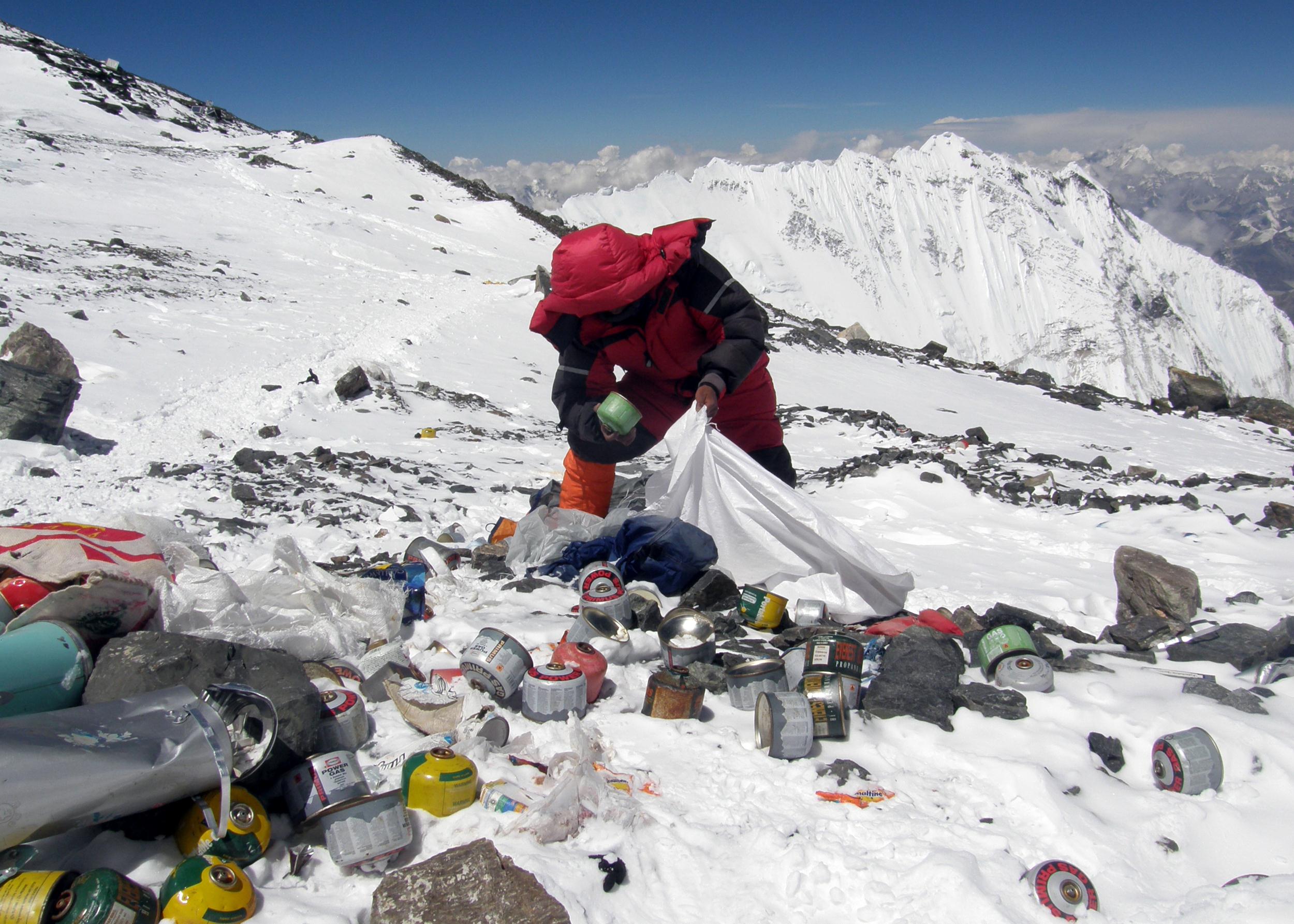A mesmerizing snow-capped landscape, the world’s highest mountain and the only part of the world, the adventurers have dared to conquer. Yes, I am talking about the highest peak in the world; Mount Everest.
But do you know, the reality of this beautiful landscape is a little grimmer? What was once an untouched wonder of the nature is now filled with waste and rubbish, and is exploited by the tourists who aim to reach at the top of the summit and fulfill their dream.
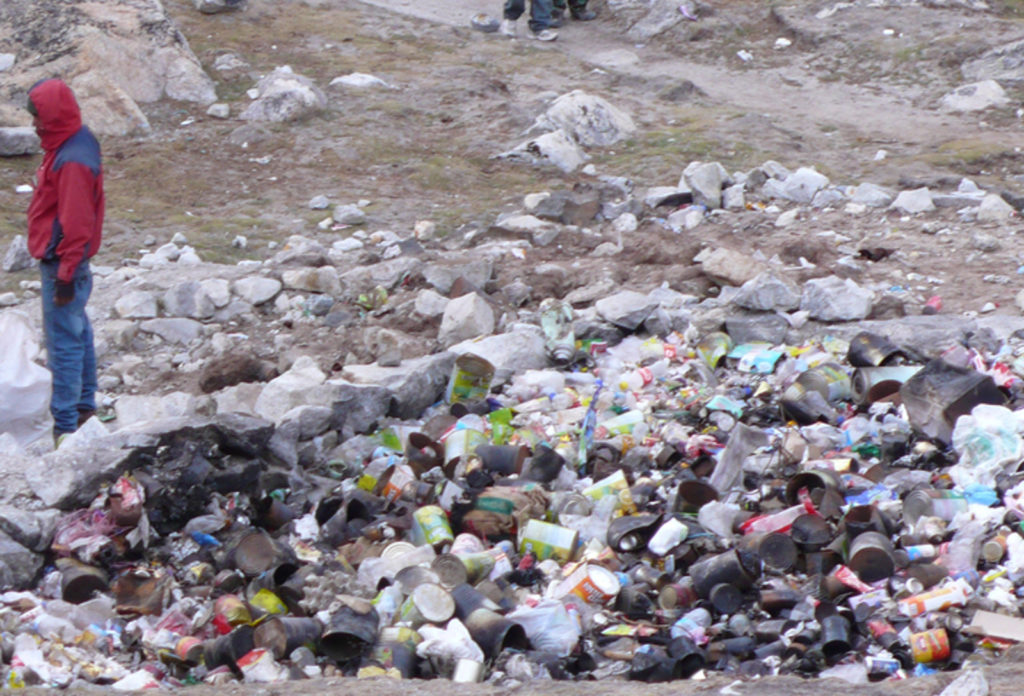
One needs proper equipment and other safety gears such as oxygen cylinders, fluorescent tents, climbing gears and various other things to scale the summit successfully. With the help of various budgeted tour companies, hundreds and thousands of immatures climb Mount Everest every year.
As they climb up to the Everest, they abandon their belongings such as tents, tons of plastic, beer cans, steel food containers and whiskey bottles behind resulting in collection of 50 tons of waste every year. Everest records around 26000 pounds of human urine and excreta annually. As it takes longer time to decompose this waste, the Mount Everest is now all filled with human excreta and other belongings of the mountaineers.
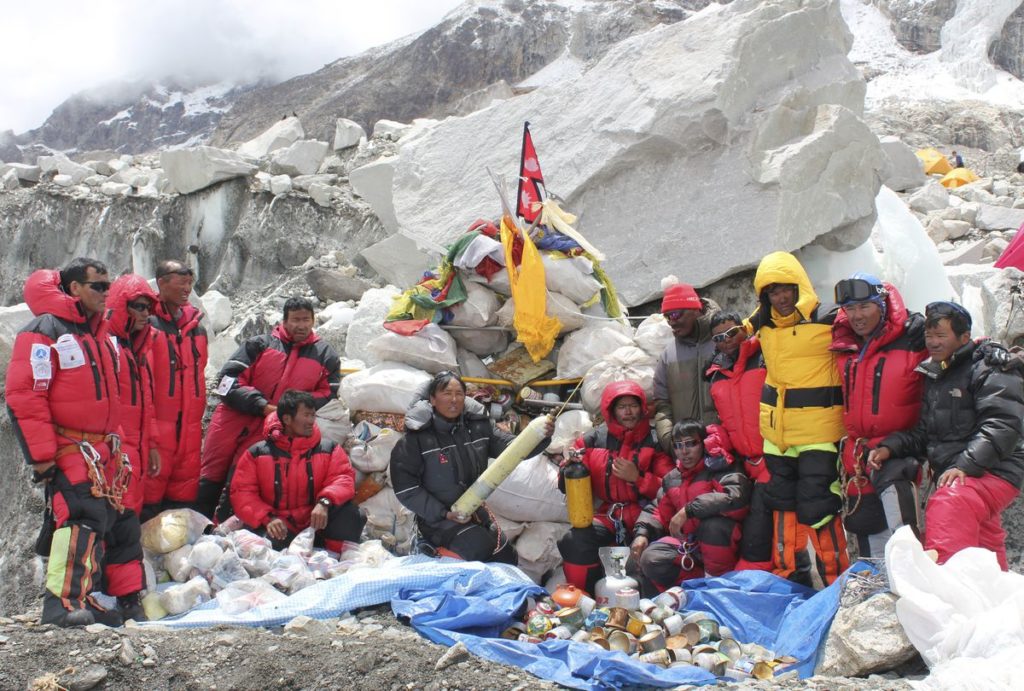
Due to these waste collected over for so many years, the water resources down the summit are completely polluted and animals usually get stuck in the ponds of human excreta. Things only get worse as along with these wastes, Mount Everest is also covered with dead bodies. This esteemed peak is slowly becoming the world’s tallest frozen cemetery.
Hundreds of people have died on Everest. For every 10 successful summits, there is one dead body. Since, the temperature up there is frigid, these dead bodies will never decompose. As a result, there are so many frozen corpses in the Everest that mountaineers actually use them as a path to navigate to scale the summit.
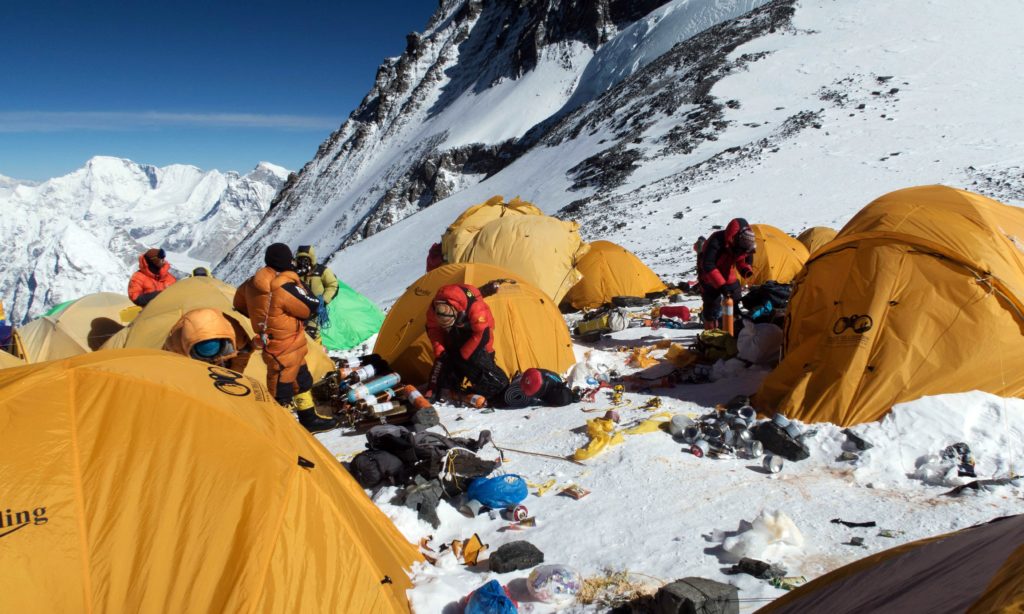
The waste collected are dumped into landfills and later burned. The burning of waste releases toxic poisons into the air and the burned and buried garbage contaminates both air and groundwater supplies.
The Government of Nepal are planning to install portable toilets at the base camp with investment in waste treatment facilities. To ensure that no new trash is left on Everest, Nepal’s tourism ministry has directed every climber going beyond the base camp to bring back at least 17.6 pounds or 8 kilograms of their personal waste and hand it over to officials stationed there. If the climbers fail to do so, legal actions shall be taken against them.
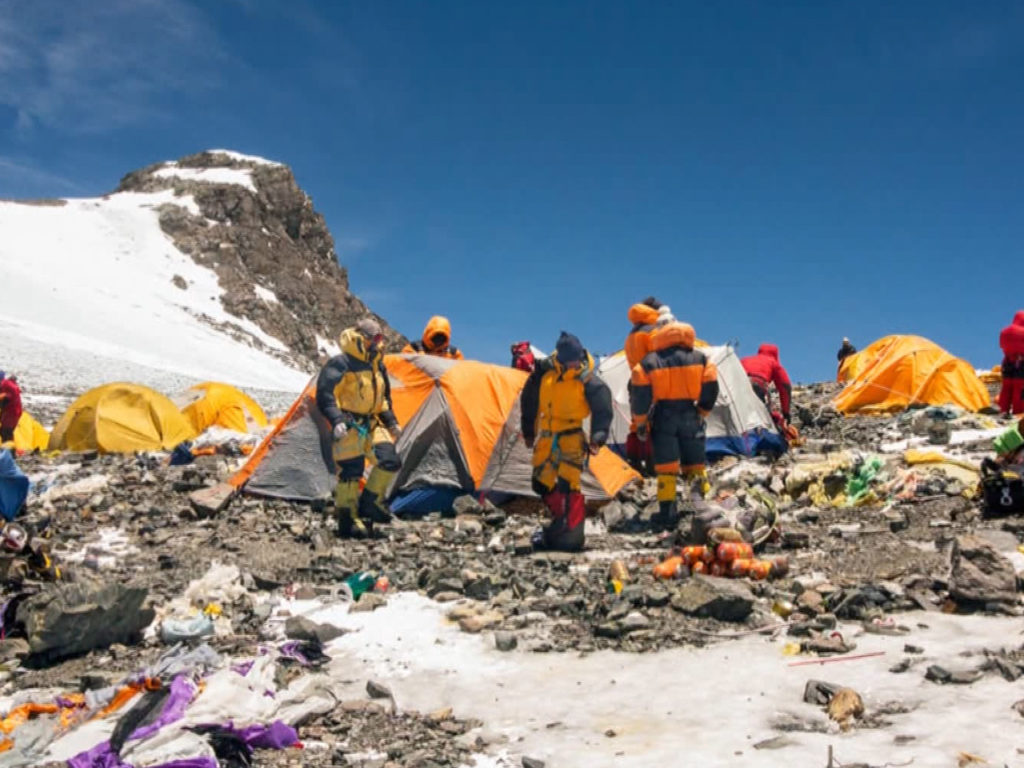
Everest climbers have to pay a deposit of $4000 for scaling the summit and this amount is refunded only after proving that they brought everything back they took up the mountain. Enforcement of this policy has been difficult since some officials accept small bribes to turn a blind eye. Also, the climbers barely have energy to get themselves down the mountain, getting rid of all their belongings and many simply don’t care about the deposit.
The indigenous Sherpas act as mountain guides, carrying everything for the mountaineers. Since, they have to carry client’s gear, they are unable to carry down rubbish and waste accumulated up in the mountain. It’s high time that operators employ more high-altitude workers to ensure that all climbers, their kit along with rubbish waste get safely up and down the mountain.
The Government of Nepal needs to take action in cleaning this sacred mountain as soon as possible, or else this majestic mountain will soon turn into a depressing dump.
Featured Image- https://nbcnews.to/2Gjid9m
